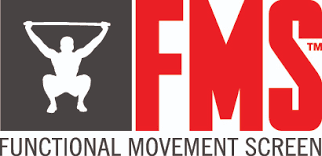The most common question we are asked in our office is, “Why do I have back pain?” There are a variety of factors that can lead to back pain. The answer can range from disc problems to neurological issues and much more.
Although there are a variety of factors, and it would take too long to go through each one, there are 2 common factors that we tend to see most often.
The 2 Common Factors:
- Repetitive stress injury
- Traumatic injury (10-20% of our patients)
Check out our video to hear more about each of these factors and if they relate to you. Always remember to live with passion and not pain.
How We Assess Back Pain in Our Office
Back pain is a condition that we see on a daily basis. With that being said, we follow a purposeful examination and assessment process when we see a case of low back pain. Here is a summary of what a back pain case assessment looks like, so you know what to expect.
- History: (the most important part)
- This is when we have a conversation about your pain. This is your opportunity to share your concerns and questions. We discuss when your pain began, what activities make it worse, what you do to alleviate the pain, if there was a specific event that led to the pain, if you have experienced similar problems before, and much more.
- Ranges of motion
- This is when we assess how well the body is moving and what motions are painful or hard to do. This helps us decide what type of rehab will be best for you. Most of our back pain patients show a directional preference. This means there is a specific movement that provides relief of the symptoms.
- Orthopedic testing
- This is when we look for “red flags.” There are occasionally conditions that we need to refer out to another specialist because we either cannot treat it or it is out of the scope of our practice. Aside from the red flags, orthopedic tests also allow us to rule in and out certain conditions and pain generators.
- Neruo exam
- This is another exam where we look for “red flags” to determine if it would be best to refer you to a specialist like a neurologist.
- Palpation
- This is when we use the skills we are trained to use. We palpate the muscles to find where there is tenderness, tightness, tension, or trigger points. We palpate the joints to see how well they move and if they can move in all the directions they should be able to move without discomfort or struggle.
- Breathing assessment
- This is one of the most important assessments. We assess how well you use your diaphragm to breathe and if you are using any other accessory muscles to breathe. It sounds silly but if you don’t use your diaphragm properly when breathing then you will lose the ability to generate intra-abdominal pressure. Intra-abdominal pressure helps stabilize the rest of the body, including your low back.
Chiropractic Treatment for Back Pain
Today we want to give an idea of what chiropractic treatment for back pain looks like in our office. Much like we have discussed in previous videos, back pain is a broad topic. Patients will say they have back pain, but that could mean anything from the pain is centralized in your low back all the way up to pain at the base of your neck.
By far the most common reason someone has back pain has nothing to do with how your back actually looks. It’s not structure related. It has everything to do with how well the joints and muscles of your back function and move.
Our Assessment:
- Rule out red flags
- Check the function of the back joints and muscles
- Check the mobility of the back
Chiropractic Adjustment:
- During this phase of care we rely on our assessment where we found specific joints that don’t move very well. We then use a chiropractic adjustment to help improve mobility.
- The adjustment allows the muscles surrounding the joint to relax.
- The cavitation, or crack, you hear is the release of little gas bubbles built up inside the joint.
Check out our video on how we adjust and assess the different areas of the back. Always remember to live with passion and not pain.


